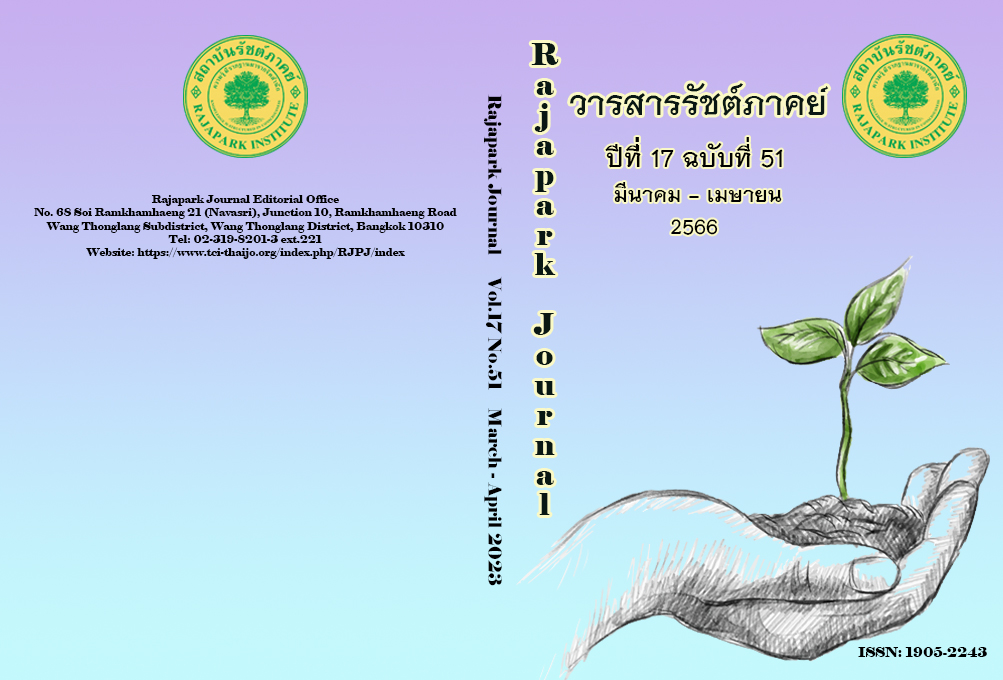Factors Affecting Thailand University Students’ Saving
Main Article Content
Abstract
The purpose of this research was to study the factors that affect the saving habits of students at a Thai university. The study was quantitative research. The data were analyzed using the mean, standard deviation, and logistic regression analysis. The research findings were as follows: 1. Most of the university students who answered the questionnaire have savings. They live in the northeastern areas of Thailand, are male, study science and technology, and have an average monthly income of less than 5,000 baht. The sources of their income are their family, and their average monthly expenditure was less than 5,000 baht. 2. Most of the respondents have moderate financial knowledge and behavior and a high financial attitude. A group who had saved and those who had not were significantly different in their level of financial skills, and 3. The model of factors affecting Thai university students savings was suitable, and the accuracy of the model to predict Thai university students savings was 70.7%. There were two factors that significantly affected Thai university students’ savings, which are average monthly income and financial knowledge.
Article Details

This work is licensed under a Creative Commons Attribution-NonCommercial-NoDerivatives 4.0 International License.
Views and opinions appearing in the Journal it is the responsibility of the author of the article, and does not constitute the view and responsibility of the editorial team.
References
Annamaria, L. (2008). Financial Literacy: An Essential Tool for Informed Consumer Choice?. http://www.dartmouth.edu/~alusardi/Papers/Literacy_ConsumerChoice.pdf.
Bank of Thailand. (2020). Thai Peoples’ Financial literacy survey 2020. https://www.1213.or.th/th/flsurveyreport/2563ThaiFLsurvey.pdf
Chonpitakwong, B. (2019). Financial and Saving Behavior of People in Khonkaen. Thammasat University.
Department of International Economic Affairs, Ministry of Foreign Affairs of the Kingdom of Thailand. (2012). History and Development of OECD. https://www.mfa.go.th/th/content/5d5bcc2715e39c306000a354?cate=5d5bcb4e15e39c3060006872
Hung, A., Parker, A.M., & Yoong, J.K. (2009). Defining and Measuring Financial Literacy. RAND Corporation. https://www.rand.org/pubs/working_papers/WR708.html.
Inlakorn, S (2020). An Analyais of Financial Literacy of the Students at Kasetsart University Sri Racha Campus. Interdisciplinary Sripatum Chonburi Journal, 6(2), 78-90.
Karunapen, S. (2017). Factors Affecting Savings Level and Savings Behaviour of Gen Y[Master’s Thesis, Thammasat University].
Lusardi, A. (2008). Financial Literacy: An Essential Tool for Informed Consumer Choice? (Working Paper). Dartmouth College.
Mahdzan, N. S., & Tabiani, S. (2013). The Impact of Financial Literacy on Individual Saving: An Exploratory Study in the Malaysian Context. Transformations in Business and Economics, 12(1/28), 41-55.
Office of the Higher Education Commission. (2021). Thailand Public University Students. https://info.mhesi.go.th/homestat_std.php
Office of Insurance Commission, Bank of Thailand. (2020). Saving. https://www.1213.or.th/th/moneymgt/save/Pages/save.aspx
Peduzzi, P., Concato, J., Kember, E., Holford, T.R., & Feinstein, A.R., (1996). A Simulation Study of the Number of Events per Variable in Logistic Regression Analysis. J. Clin. Epidemiol. 49, 1373-1379.
Somparnpian, K. (2013). Saving Behavior and Factors Affecting Savings of Outside Workers System in Chatuchak Market[Master’s Thesis, Srinakharinwirot University].


